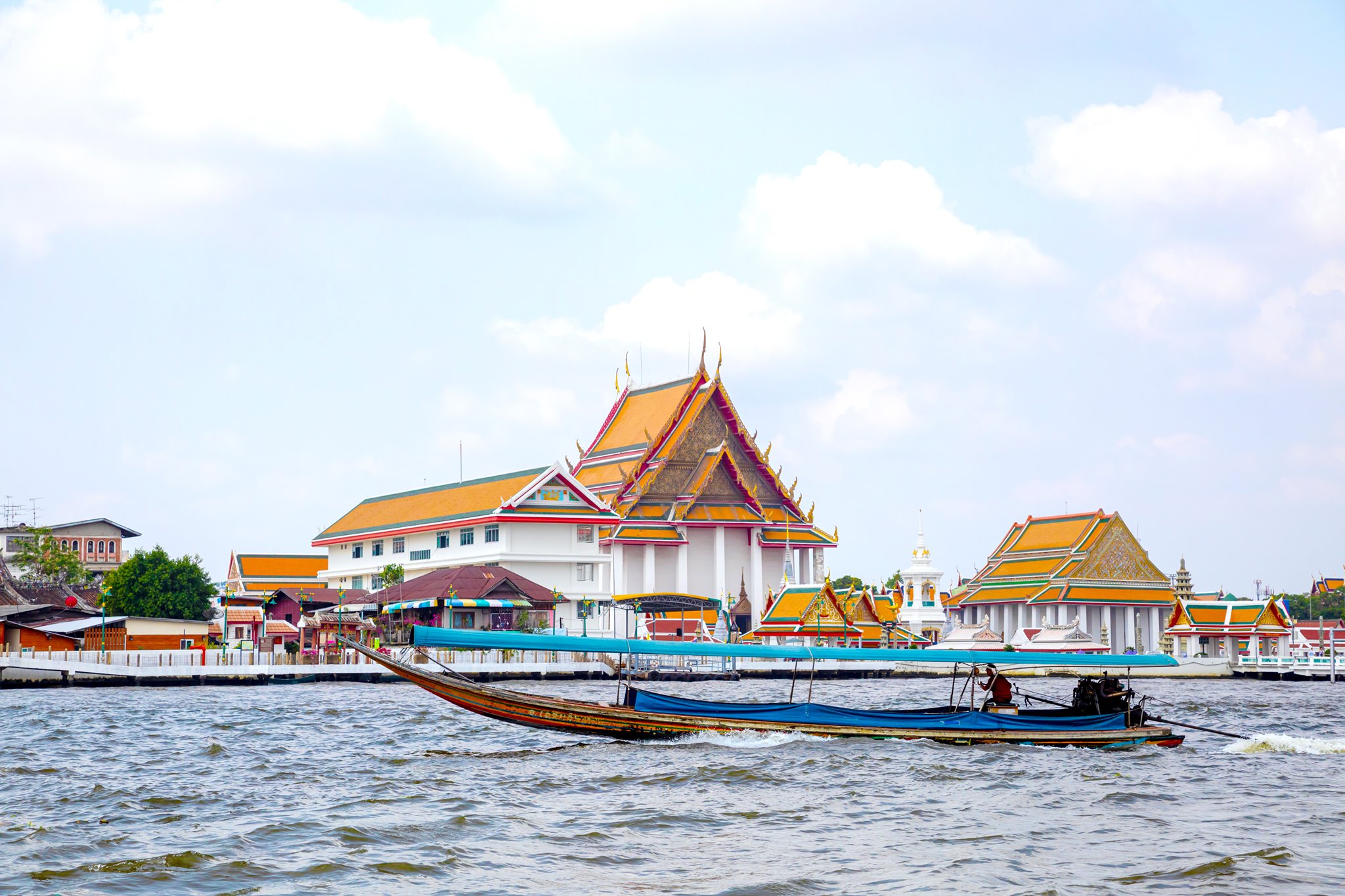Bangkok was once known as the “Venice of the East,” and for good reason. A series of population expansions occurred along the water, which was considered the city’s lifeline, as a result of an extensive network of canals that connected to the main river, the Chao Phraya. Riverside communities have flourished over generations, serving as centers of religious observance, cultural and social advancements, and economic growth.
Here are the three diverse communities along the Chao Phraya River that we strongly recommend you see when visiting Thailand.
Kudee Jeen: a multicultural hub of three religions
Kudee Jeen, a historic community near the Chao Phraya River, is home to many Thai-Portuguese descendants. Dating back more than two centuries, it is famous for its multicultural identity, seen in the prevalence of three main religions: Buddhism, Christianity, and Islam. Not only does visiting Kudee Jeen provide an opportunity to observe incredible architecture and scenery, but it also introduces you to a tranquil lifestyle that is founded on religious tolerance and harmonious coexistence. Furthermore, exploring Kudee Jeen is now easier than ever because of the Bangkok Metropolitan Administration’s effort, which aims to make numerous communities in the city more “walkable.”
Top 5 Things to Do in Kudee Jeen
Visit Baan Kudichin Museum: The owner of this cream-colored wooden house is a Portuguese soldier’s descendant. The museum itself tells the tale of the Portuguese as the first Westerners to arrive in the Kingdom of Siam, the development of Kudee Jeen as a community, the local way of life as illustrated by a variety of household objects, and the history of Santa Cruz Church. Additionally, there is a rooftop space that offers breathtaking views of the Chao Phraya and the neighborhood. (Opening hours: Tuesday–Sunday, 09:30–17:30)
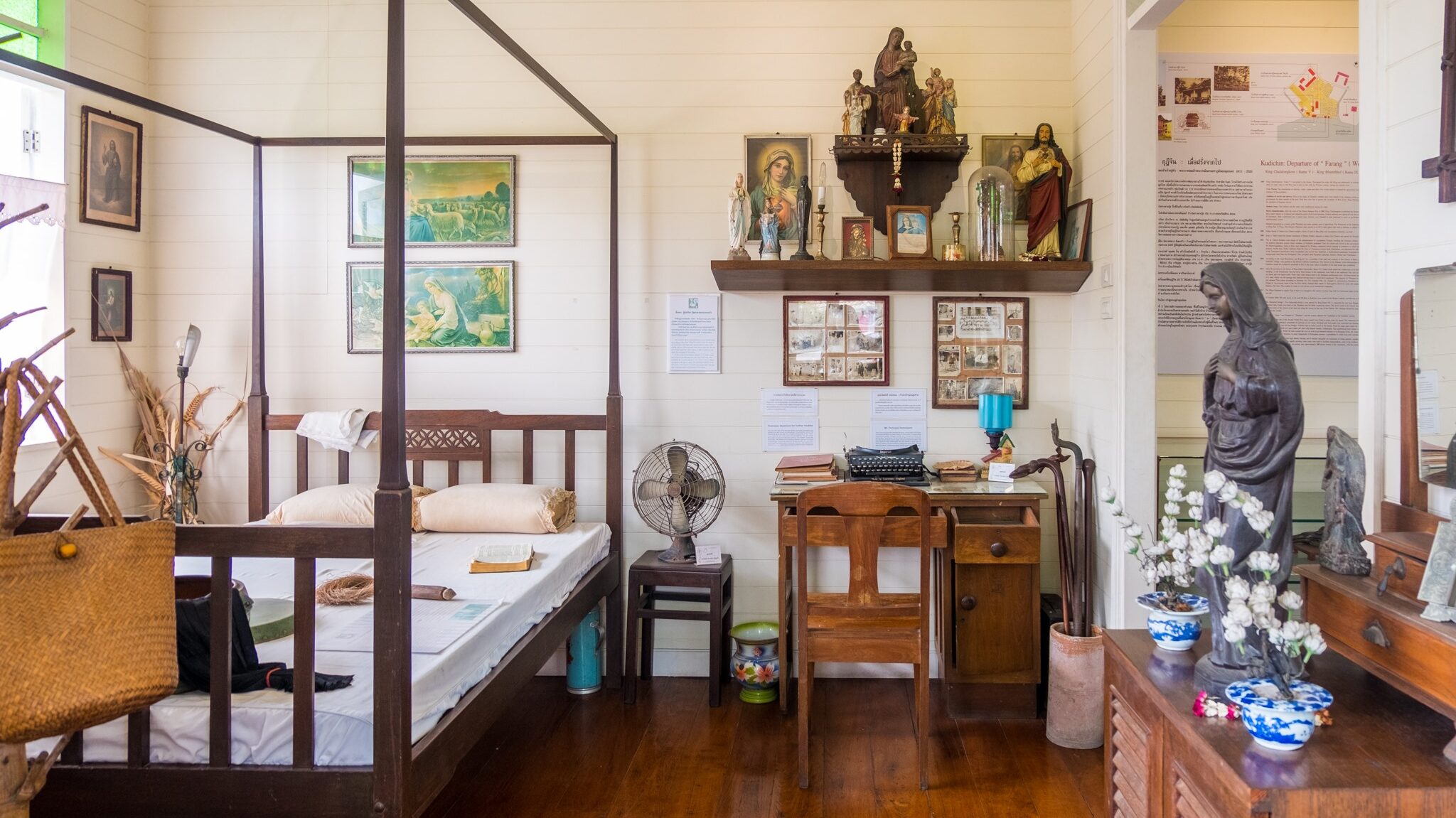
Visit Santa Cruz Church: Built in 1770, this Catholic church was profoundly influenced by Renaissance architecture. The dome is reminiscent of the Duomo in Florence, while the main architectural highlight is the Carillon bell tower, consisting of 16 brass bells that are still in use to this day. (Mass hours: Monday-Saturday 19.00, Sunday 06:00, 08:30, and 19:30)
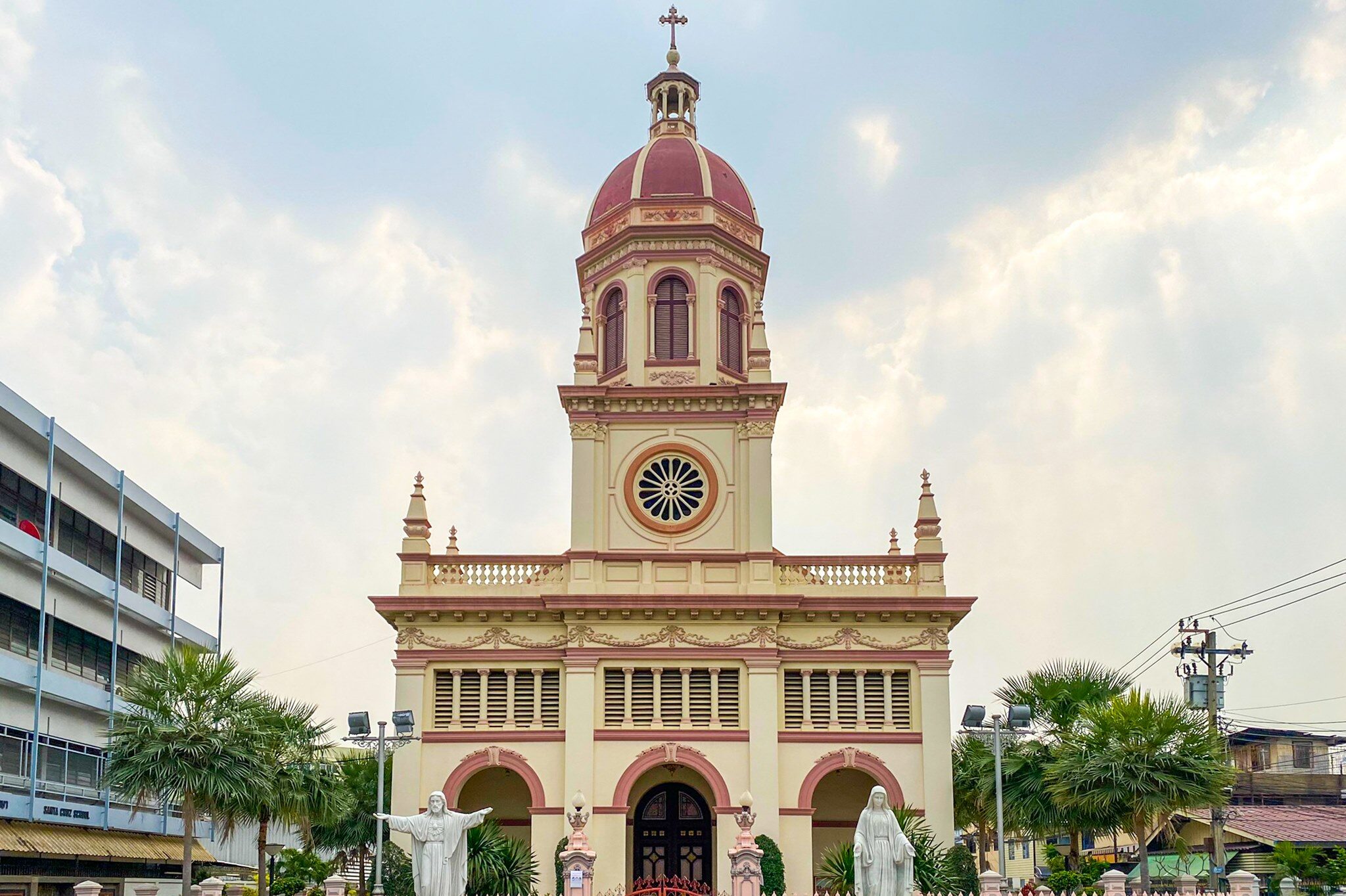
Visit Wat Kalayanamit: From the outside, this Buddhist temple resembles traditional Thai architecture. However, there are hidden elements of Chinese influence in various places throughout the temple grounds, such as the stone archway imported from China, a century-old incense-holding pot, and a multi-story Chinese-style pagoda. Luang Poh Tor, a Buddha statue with a lap breadth of 12 meters, is located in the expansive Wihan at the temple’s center. (Opening hours: daily, 07:00–17:00)
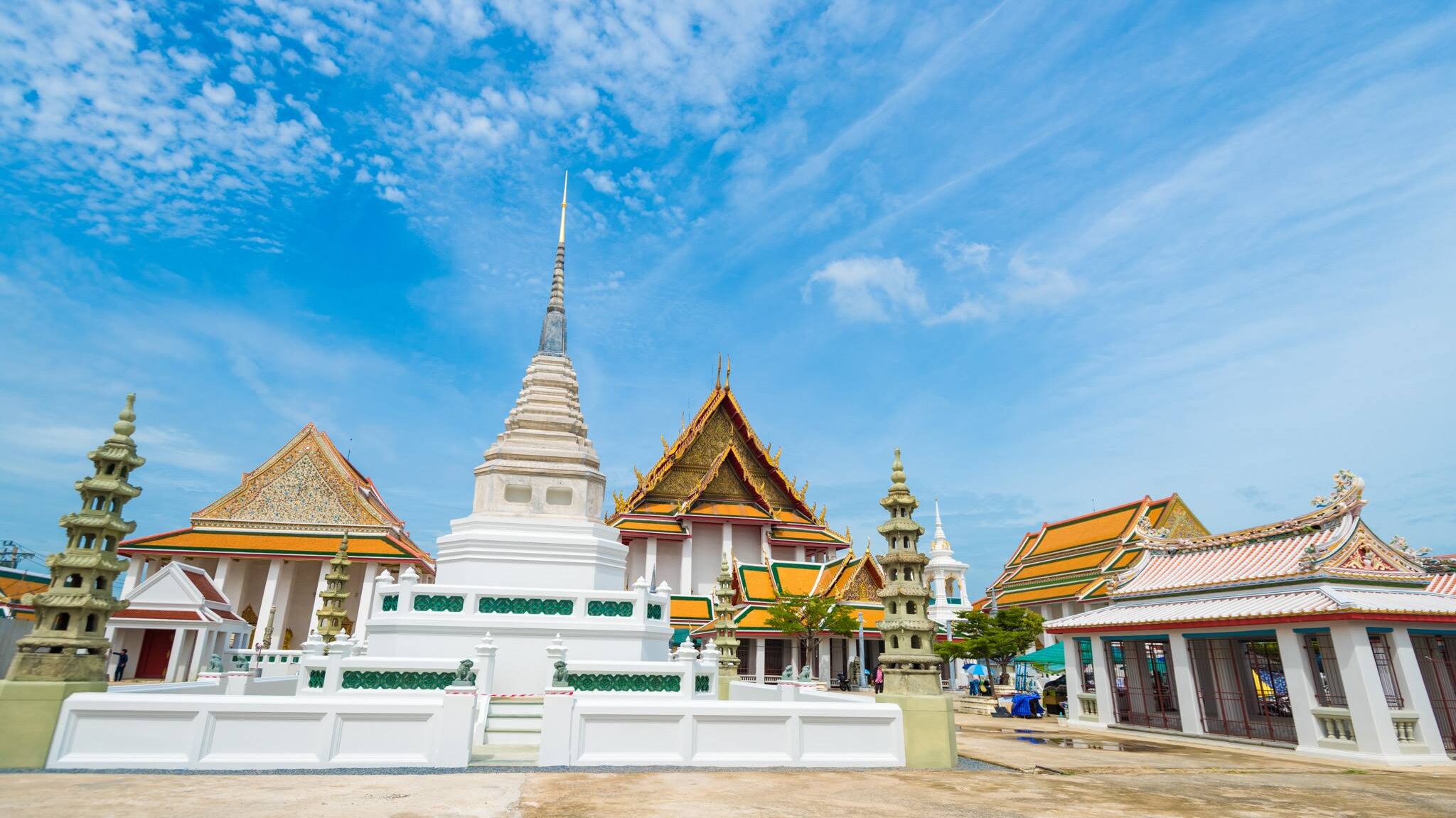
Visit Bang Luang Mosque (Kudee Khao): This is the only mosque in the world with Buddhist-style architecture. Bang Luang Mosque, unlike typical mosques, has a gabled roof with ornate flower carvings instead of the usual dome. In the center of the gable is a carving of an offering tray with a lotus on top. In the middle of the lotus, the word “Allah” appears. (Opening hours: daily)
Sample Kudeejeen cupcakes: The recipe for these Portuguese-Chinese cupcakes has been passed down for five generations. The batter, made from duck eggs, white sugar, and wheat flour, is poured into metal cups, topped with dried winter melons, dried persimmons, or raisins, and cooked in wood-fired ovens until golden brown on the exterior and soft and fluffy on the inside.
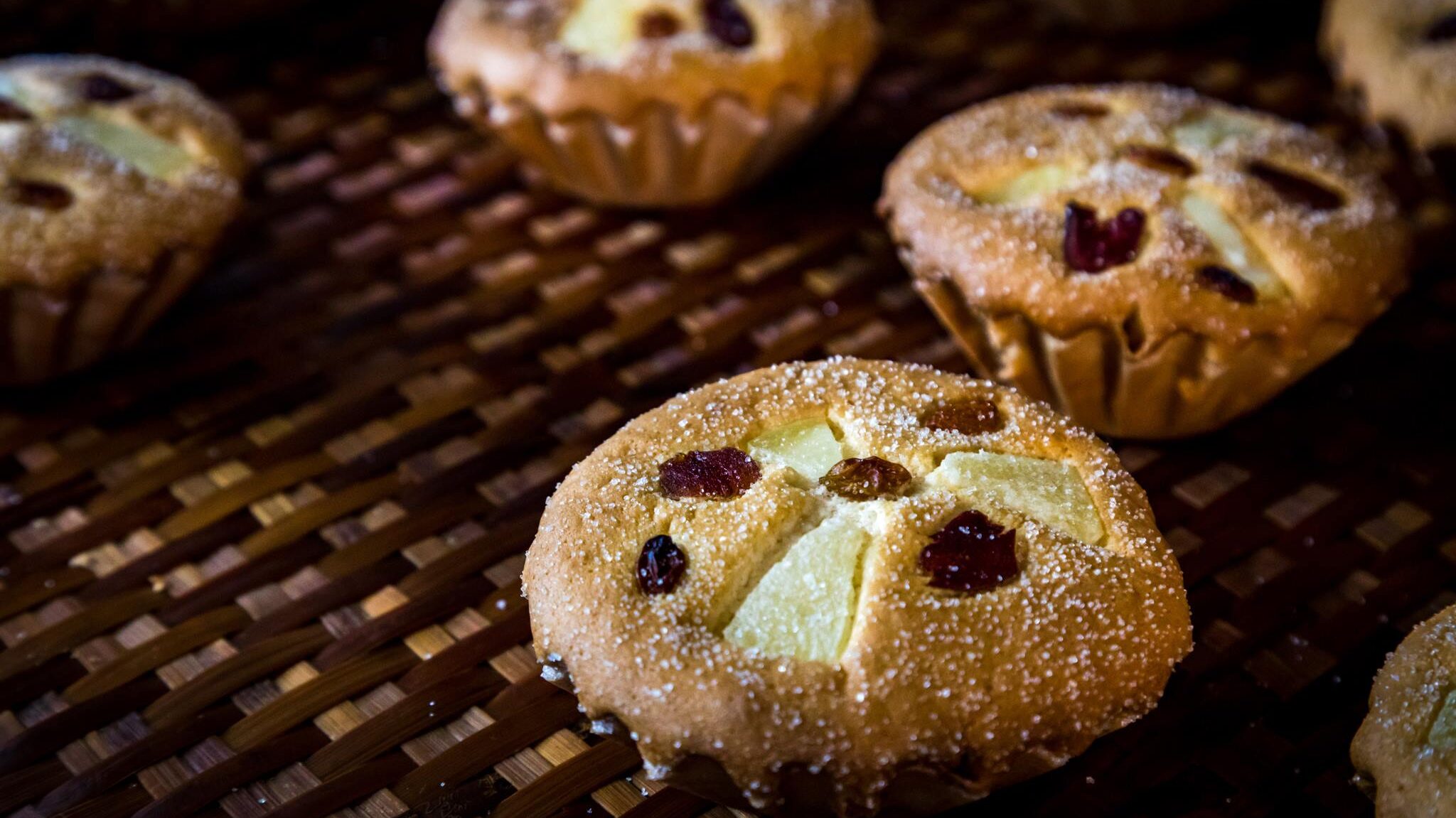
How to get there: Take a Chao Phraya Express Boat and get off at Wat Kalayanamit Pier. Take a walk into the community (about 200 meters).
Talad Noi: From an old Chinese neighborhood to a creative trading hub
Talad Noi is a Chinese neighborhood with over two centuries of history. Walking through its streets and alleyways, you may discover traces of Thai and Chinese cultures that have mixed harmoniously. Over the past few years, a group of researchers, architects, and city conservationists have come together to restore old buildings in the area, giving them a new life by combining the old and the new. Chic coffee shops, art galleries, and street art are among the new additions that have transformed this quaint old neighborhood into Bangkok’s premier creative and lifestyle destination.
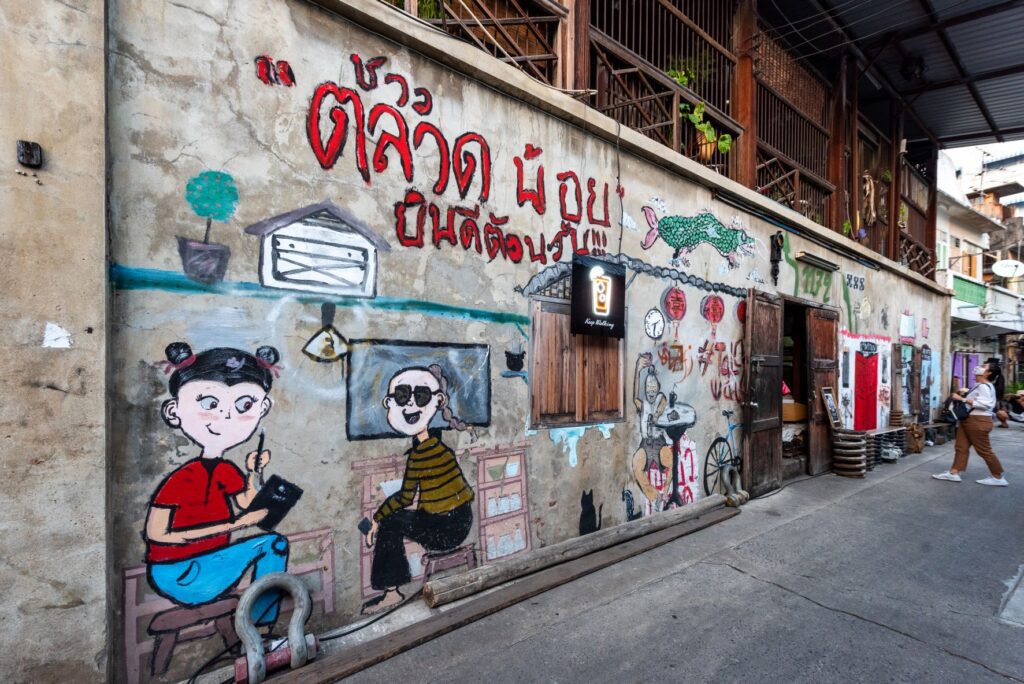
Top 5 Things to Do in Talad Noi
Talad Noi Museum features two primary exhibitions that take visitors on a journey through the area’s history: “Talad Noi’s Identity as the Hub for Auto Spare Parts.” The other exhibition is titled “Talad Noi and the Chinese Technician Community in the Early Rattanakosin Era.” Before you begin walking the streets of Talad Noi, we encourage you to stop by this museum and learn about its history before venturing out on your own to discover the neighborhood. (Opening hours: Tuesday-Friday, 08:30-16:30, and Saturday-Sunday, 10:00-18:00)
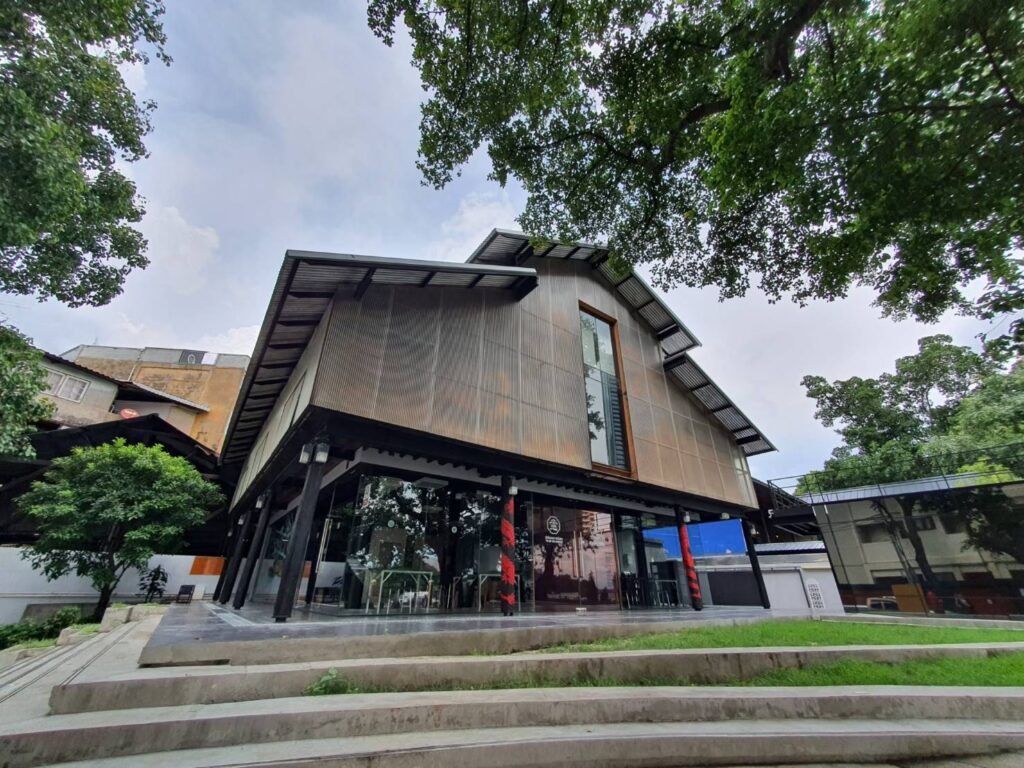
Rong Kueak Shrine Alley is a narrow lane that leads to a 130-year-old Chinese shrine on the banks of the Chao Phraya. The shrine is one of the oldest and most authentic architectural treasures in the area. Two walls stand alongside Rong Kueak Shrine Alley, which leads up to the shrine. On one side, you’ll see an abundance of colorful graffiti and street art. On the other side, there is a collection of award-winning photographs of the neighborhood on display.
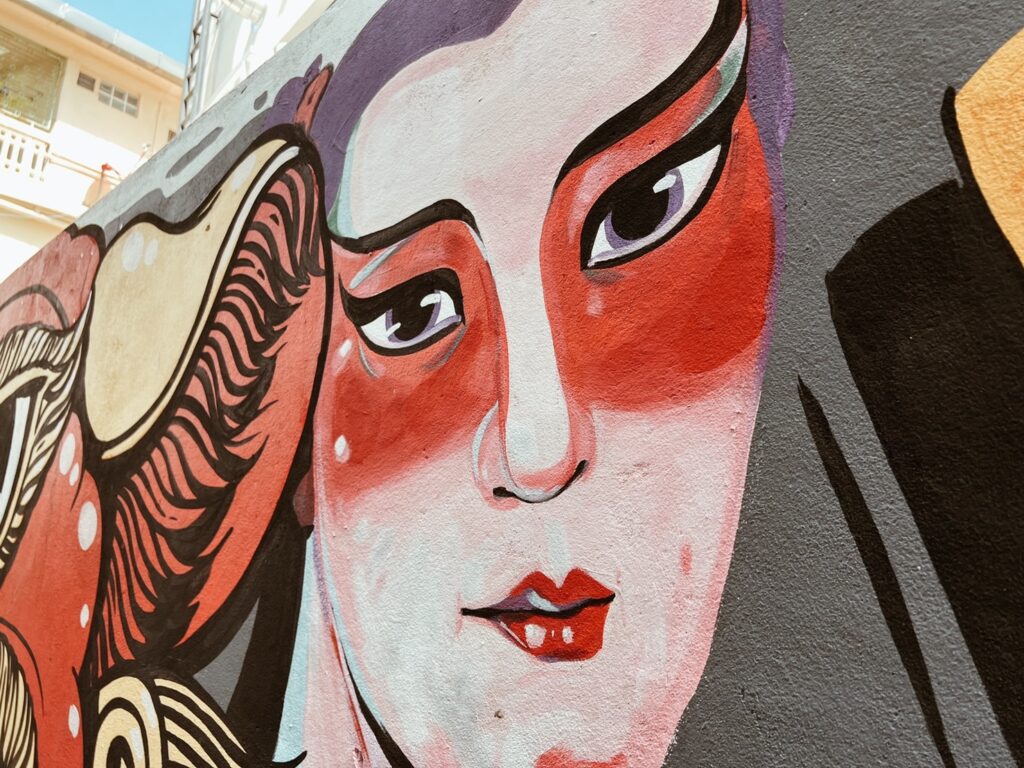
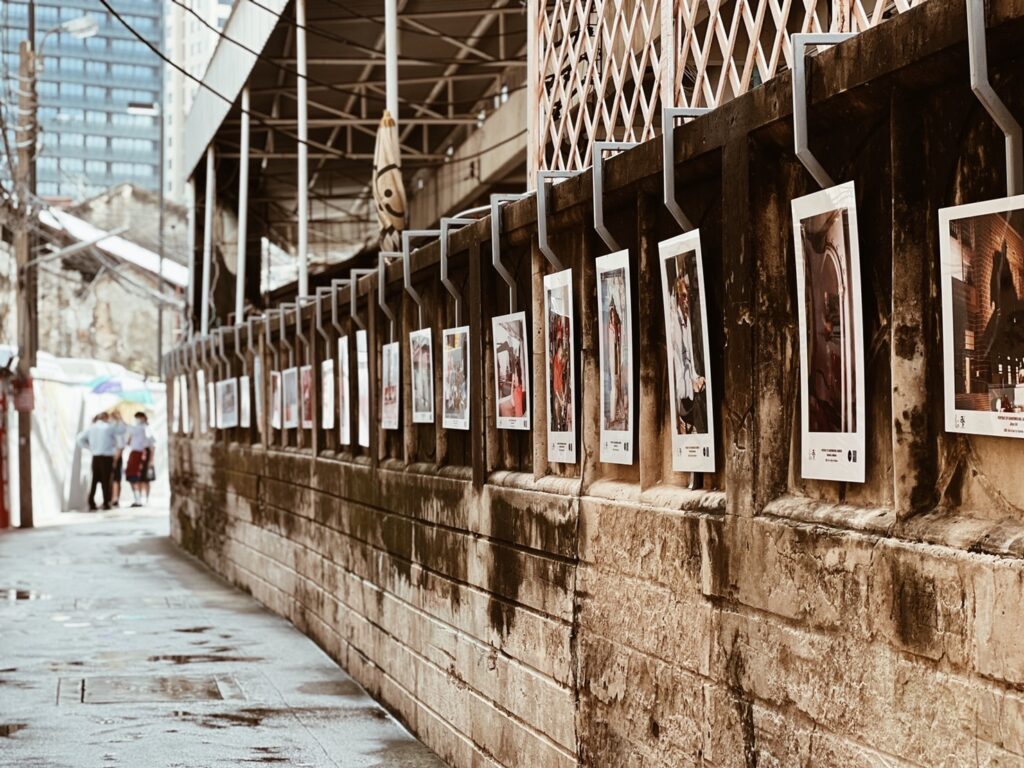
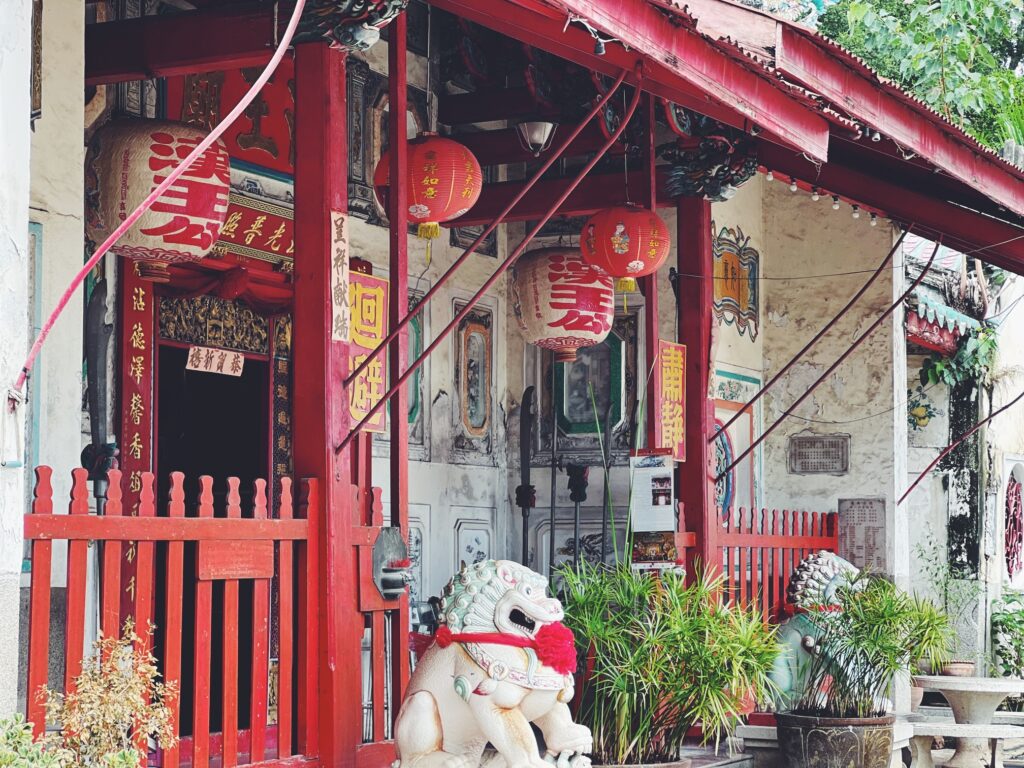
Try the famous chilled pork legs: A traditional Chinese technique for preserving food that has been passed down through more than three generations gave rise to this delectable treat. Chilled pork legs, which used to take 12 hours to make, were a wintertime favorite. They were then served with chili-garlic vinegar and chopped into bite-sized pieces. (Opening hours: Monday–Saturday, 06:00–15:00)
Direction: https://maps.app.goo.gl/2nrZLnH9Tn3ahF8h9
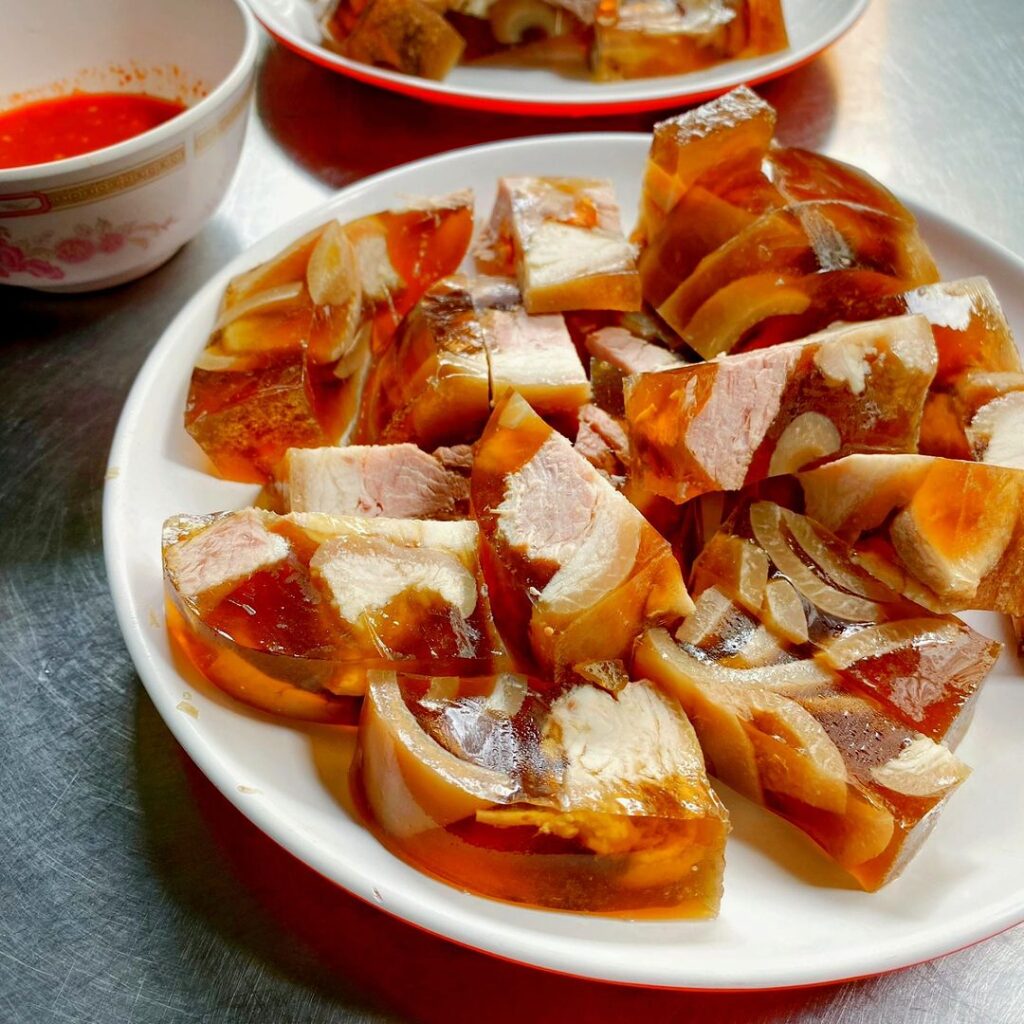
Learn how to make Chinese-style worship cushions: This one-of-a-kind workshop is organized by the third-generation cushion makers of Hengseng Cushion Shop, who are dedicated to preserving this rare craft. You’ll learn how to make keychains and traditional Chinese worship cushions from the colorfully printed fabric of cherry blossoms, which represents prosperity and good luck. (Opening hours: 08:00–17:30)
For more information: www.facebook.com/HengsengTaladnoi
Sip herb-infused cocktails at Baan Rim Naam: Originally a riverside rice barn, this bar and restaurant boasts a breezy, relaxing ambiance and a stunning view of the river. Their must-try dishes include deep-fried pork larb and miang kham (traditional Thai herbal, aromatic bite-sized appetizers), as well as refreshing cocktails infused with herbs like lemongrass, pandanus leaves, and butterfly pea blooms. (Opening hours: Thursday–Sunday, 12:00–22:00)
For more information: www.instagram.com/baanrimnaam
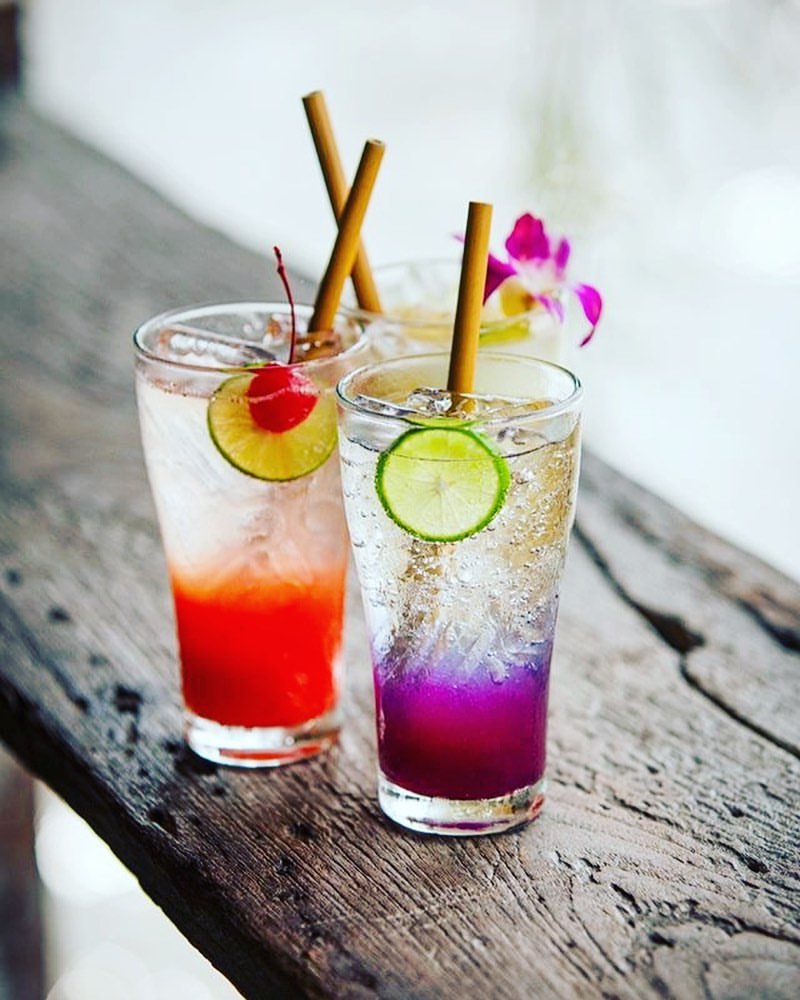
How to get there: Take an MRT train to Hua Lam Phong station, then take a taxi or a tuk-tuk to Soi Charoenkrung 22. Walk approximately 100 meters into the community.
Koh Kret: a Mon settlement in the middle of the Chao Phraya River
Koh Kret, located in Nonthaburi province (about 20 kilometers from Bangkok), was formed around 300 years ago as a consequence of a canal construction project aiming at shortening the shipping route to Ayutthaya, Siam’s capital at the time. Later, a royal decree was issued to relocate the Mon people, who had lost the war to the Burmese, to Koh Kret, where it has been their home for the past few centuries. The Mon of Koh Kret are well-known for their ceramics, food, and commitment to preserving their traditional way of life.
Top 5 Things to Do in Koh Kret
Bike around the island: One of the best ways to explore Koh Kret is to rent a bicycle and take a 5-kilometer loop through the alleys and lanes around this small island. Bicycle rental fees range from 40 to 60 Baht per day.
Try Mon cuisine: One of the most well-known Mon dishes is Khao Chae, a summertime delicacy made of cooked rice soaked in jasmine-infused water and served with a variety of condiments, including caramelized fish, peppers stuffed with pork and shrimp fillings, and deep-fried aromatic “Kapi” balls made from shrimp paste mixed with various herbs.
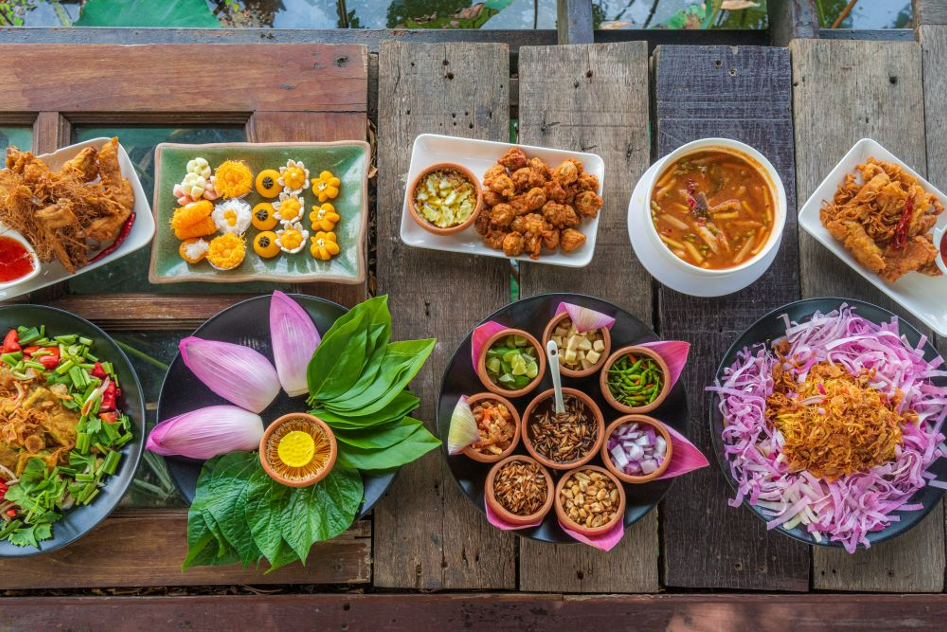
Experiment with clay pottery: Clay pottery has been a specialized craft of the Mon people for centuries and is considered a regarded craft of Nonthaburi province. Visitors at Pa Tum Pottery Factory pay 50 Baht for a piece of clay, learn how to make a pot or a vase on the spot, and take it home with them.
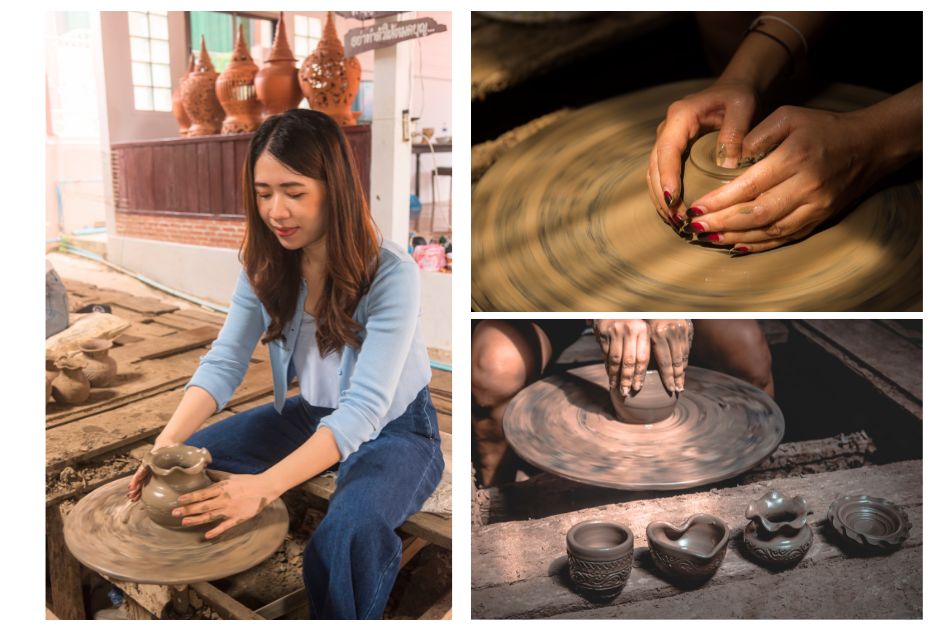
Visit the Leaning Pagoda: Located at Wat Poramai Yikawat, this picturesque landmark was built as a replica of Myanmar’s Shwemawdaw Pagoda, a sacred place of worship for the Mons. Situated next to the river, the pagoda has eroded over the years, causing it to tilt to one side.
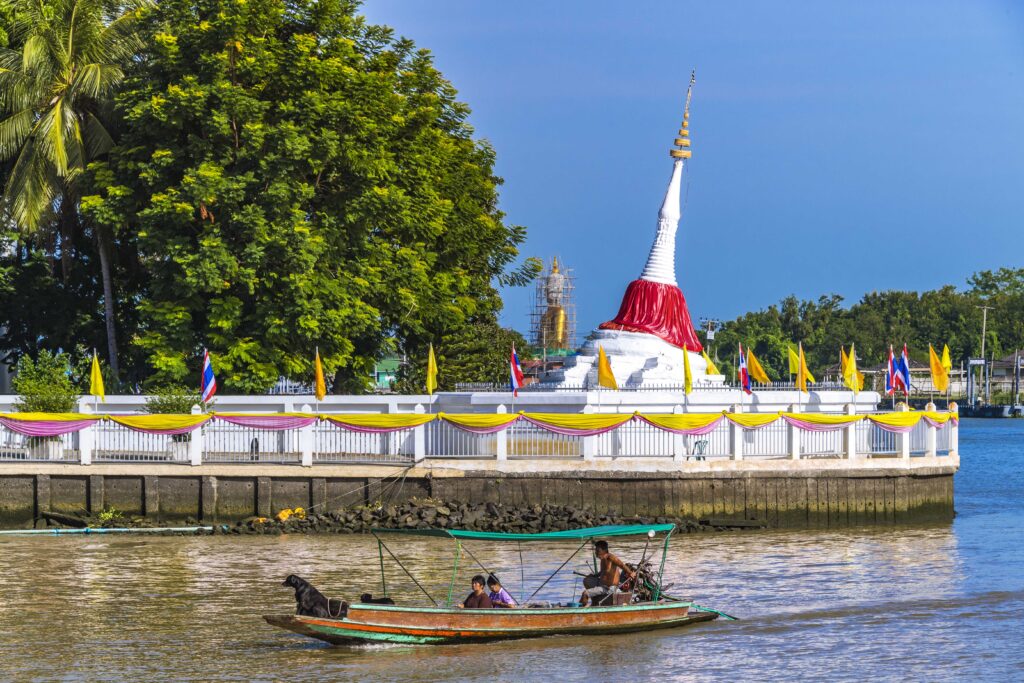
Sip Thai craft beers at ChitBeer: The bar is regarded as one of Thailand’s coolest beer bars. Mr. Chit, the owner, is a well-known craft beer maker who has made over 16 different beers, including saison, wit, ale, IPA, weizen, and stouts. The beers are delicious, the prices are reasonable, and the site, which overlooks the river, gives an unforgettable backdrop that is hard to beat. (Opening hours: Saturday–Sunday, 12:00–21:00)
For more information: www.facebook.com/Chitbeer
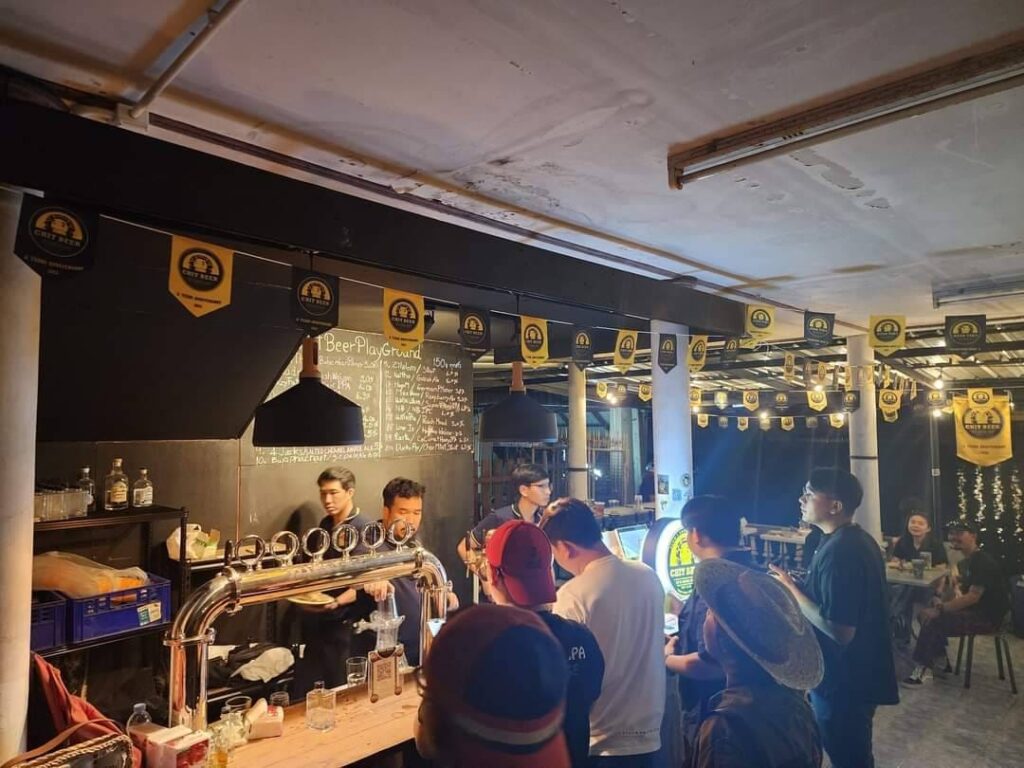
How to get there: Take an MRT train (Purple Line) to the Ministry of Public Health station, then take a taxi to Wat Sanam Nuea Pier. From the pier, take a ferry across the river to Koh Kret. We recommend going on Saturdays, Sundays, or public holidays when most shops are open and there are more activities to do. The best time to visit is between 08.00 and 19.00.
Share

